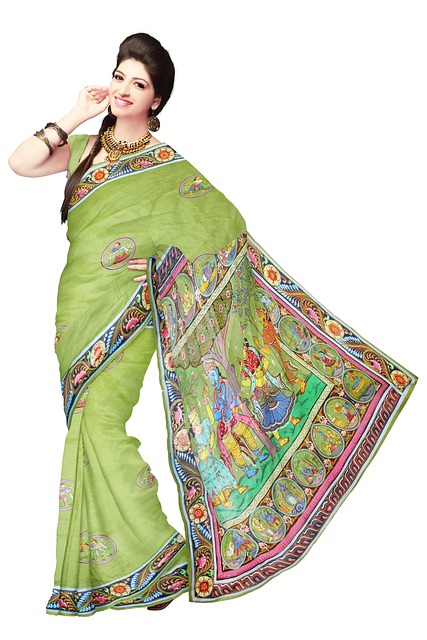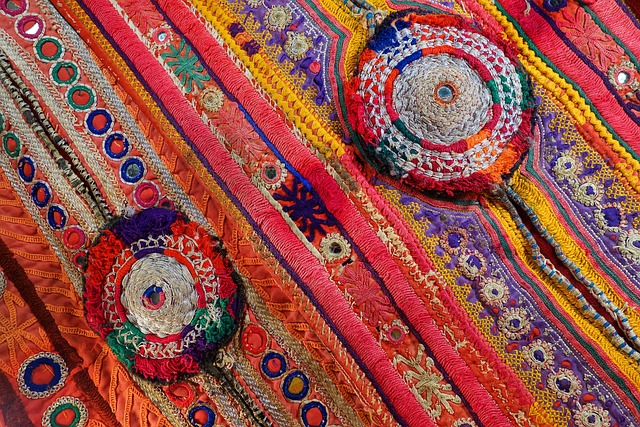India has a rich and diverse textile heritage that spans centuries. Traditional Indian textiles are a testament to the country’s vibrant culture, exquisite craftsmanship, and deep-rooted traditions. From the intricate weaves of Banarasi silk to the vibrant tie-dyes of Bandhani, each textile reflects a unique story, showcasing the mastery of artisans and the richness of Indian aesthetics. This article explores the kaleidoscope of traditional Indian textiles, highlighting their cultural significance, craftsmanship, and enduring legacy.
Saree: The Epitome of Elegance:
The saree, a six-yard-long drape, is an iconic symbol of Indian clothing. It is a versatile garment worn by women across the country, with each region showcasing its distinctive style and weaving techniques. From the intricate handloom weaves of Kanjivaram in Tamil Nadu to the delicate silk and zari work of Banarasi in Uttar Pradesh, sarees epitomize elegance, grace, and craftsmanship. The variety of fabrics, patterns, and motifs used in sarees reflect the cultural diversity of India.

Bandhani: Tie-Dye Magic:
Bandhani, also known as Bandhej, is a traditional tie-dye technique practiced in the states of Rajasthan and Gujarat. It involves tying small portions of fabric with threads and then dyeing it, creating intricate patterns and motifs. The vibrant colors and unique designs of Bandhani make it a popular choice for sarees, turbans, and dupattas. This ancient art form not only showcases the creativity of artisans but also serves as a symbol of celebration and festivity.
Patola: A Masterpiece of Double Ikat:
Originating in the Patan region of Gujarat, Patola is a stunning example of double ikat weaving. It involves meticulously dyeing both warp and weft threads before weaving, resulting in intricate geometric patterns and vibrant colors. Patola sarees, known for their richness and complexity, are considered a mark of prestige and are often passed down through generations. The intricate craftsmanship and time-intensive process of creating Patola textiles make them highly prized.
Phulkari: The Floral Embroidery:
Hailing from Punjab, Phulkari is a traditional embroidery technique that translates to “flower work.” It involves creating intricate floral patterns using vibrant silk threads on a plain fabric. Phulkari is not only visually appealing but also carries cultural significance, representing fertility, love, and prosperity. Phulkari dupattas, shawls, and sarees are cherished heirlooms and are worn during special occasions and festivals.
Ajrakh: A Royal Legacy:
Ajrakh is a traditional block-printing technique that originated in the Kutch region of Gujarat. It involves intricate geometric and floral patterns created using natural dyes and wooden blocks. Ajrakh textiles are known for their distinctive blue and red hues. The process of creating Ajrakh involves multiple stages of dyeing and printing, with each layer adding depth and complexity to the design. The artistry of Ajrakh is deeply rooted in the region’s cultural heritage and reflects the legacy of royal patronage.

Kantha: The Art of Stitching Stories:
Kantha is a traditional embroidery technique practiced in West Bengal and Odisha. It involves stitching intricate patterns and motifs using simple running stitches. Kantha textiles, often created from recycled or repurposed fabrics, carry narratives and tell stories through their designs. Kantha sarees, quilts, and stoles are not only visually appealing but also serve as a testament to the resourcefulness and creativity of women in rural communities.
Conclusion:
Traditional Indian textiles represent a rich tapestry of colors, crafts, and traditions.They encapsulate the artistic brilliance, cultural diversity, and skilled craftsmanship of the country. From the intricate weaves of Banarasi silk to the mesmerizing tie-dyes of Bandhani, each textile narrates a story, capturing the essence of India’s cultural heritage. Preserving and promoting these traditional textiles is not only a means of celebrating India’s glorious past but also a way to support local artisans, sustain traditional craftsmanship, and keep the legacy alive for future generations to cherish.